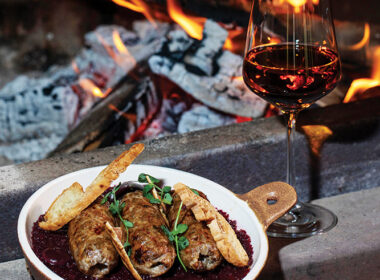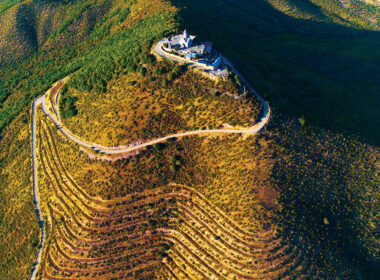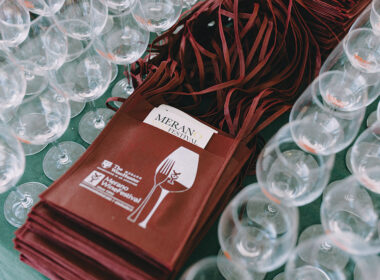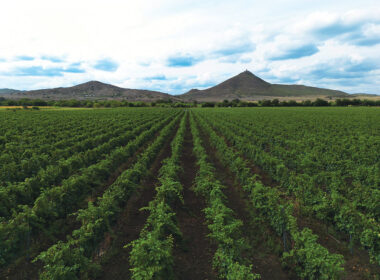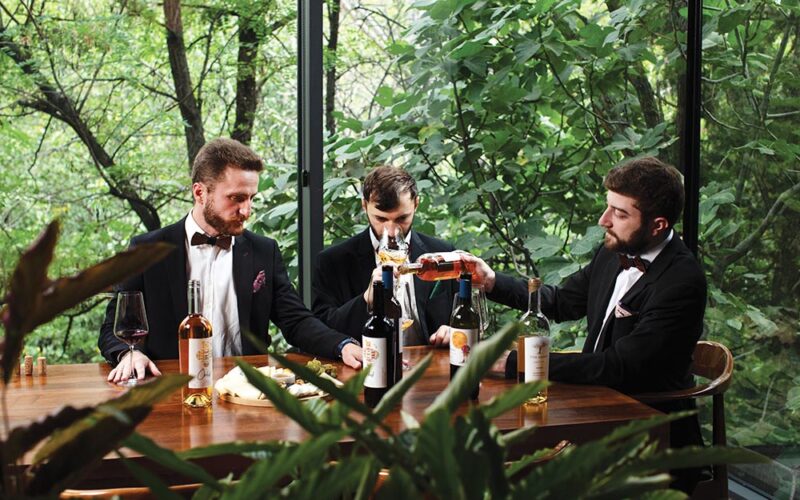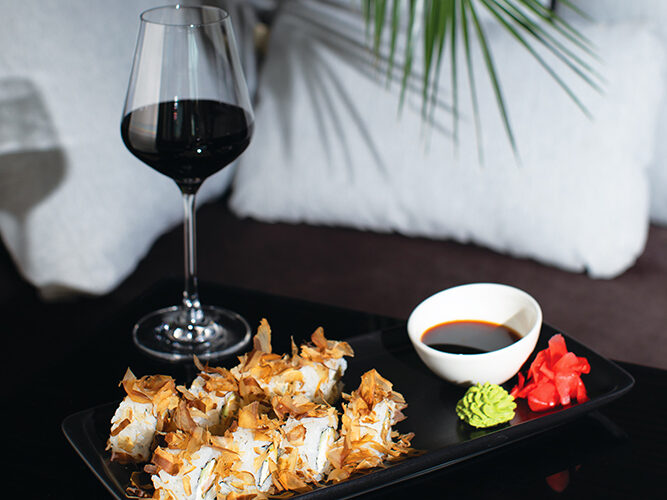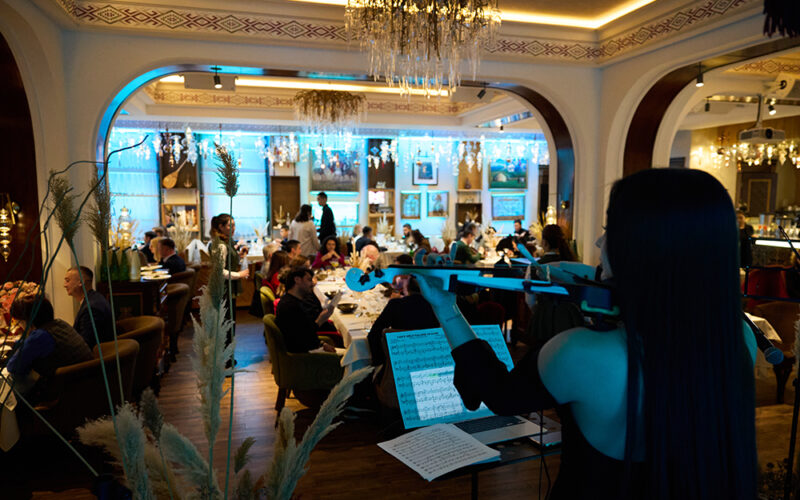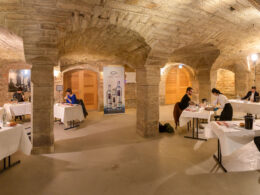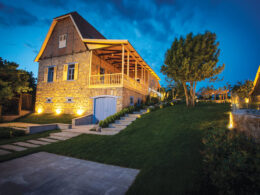| Tazo Tamazashvili. Best Sommelier of Georgia 2018 |
In the column, I’m presenting young, small wine producers, who have many interesting plans and visions for the future and focus primarily on experimentation and quality. Although they do not produce every style (despite their capability to do so), each of their moves is thoroughly calculated, and they have the desire to create a unique product and present it to the customer. In any country we visit, it is exactly through such small producers that we get an idea about the country itself and the wines of the region.
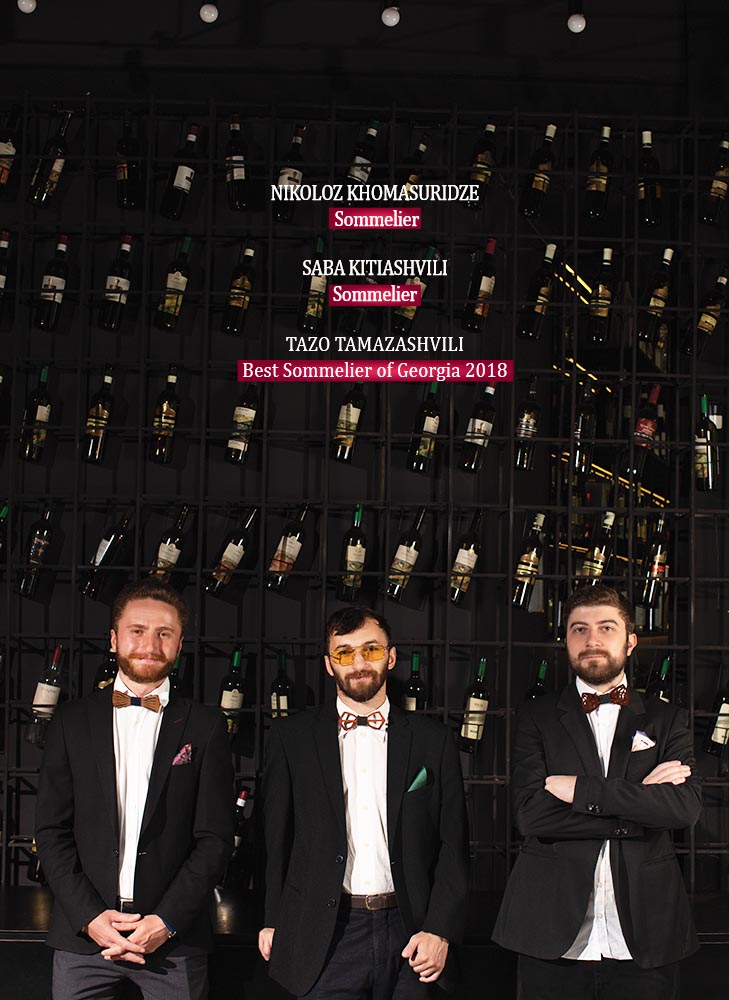
Winery Vini Amare
Tazo Tamazashvili: Behind the wines of Vini Amare stands a young winemaker, Grigol Neparidze, for whom winemaking is a family tradition. Having graduated from the Faculty of Viticulture and Winemaking at the Agricultural University, Grigol decided to make wine himself. Over the years, he has introduced his creations to us sommeliers, and successfully brought them to the market. Vini Amare operates wineries in Chiatura (specifically in the village of Shukruti) and Tbilisi. Grigol specializes in crafting various types of wine from Kakhetian grape varieties, producing up to 5000 bottles annually.
Nikoloz Khomasuridze: I recall encountering this young winegrower and winemaker during a Vini Amare wine tasting event at our Enology wine store, since I am also his colleague. I envision the promising future of Georgian winemaking as being within these small-scale wineries with their experimentation and numerous intriguing trials. It’s the path these smaller wineries tread which is highly appreciated. Initially, Grigol began making wine in Chiatura, employing the classical method before transitioning to the traditional qvevri technology. Presently, he crafts several varieties, among which, on this occasion, we’ve chosen the Kakhuri Mtsvane and Kisi.
Kakhuri Mtsvane (village of Kakabeti), 2021
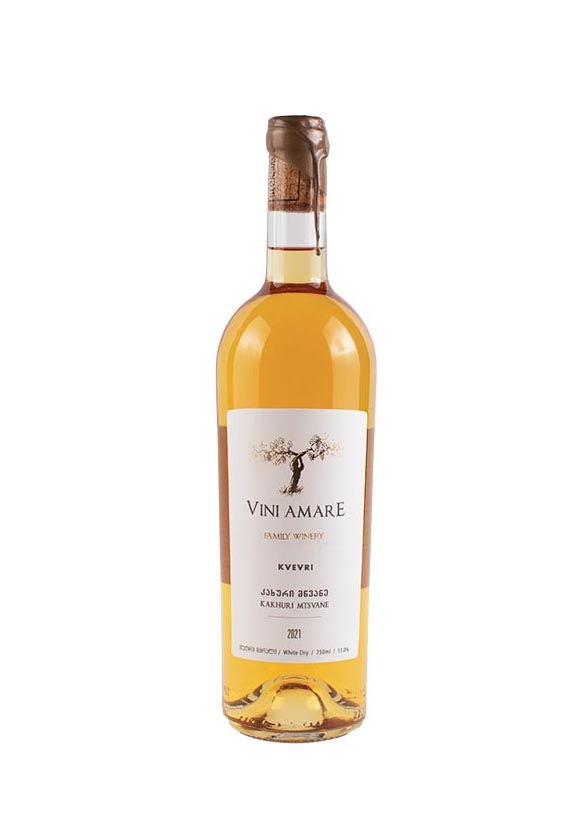
Nikoloz Khomasuridze: The Kakhuri Mtsvane presents an alluring golden hue, exuding radiance and clarity with intensely persistent flavours of field flowers and freshly cut grass—hallmarks of this particular variety. Subtle vegetal tones, inherent to Kakhuri Mtsvane, seamlessly merge into delightful aromas of stone fruits. It has a medium-bodied profile complemented by gentle tannins. This gastronomic wine will pair very well with mildly spiced dishes from Kakhetian cuisine.
Saba Kitiashvili: Within this wine, delicate notes of tea, subtle hints of cauliflower and bell pepper – distinctive to Kakhuri Mtsvane – seamlessly fuse with the essence of white cherry. An undertone of caramelization is also noticeable. It has well-balanced, velvety tannins despite it being the 2021 vintage.
Kisi (Akhmeta district), 2021
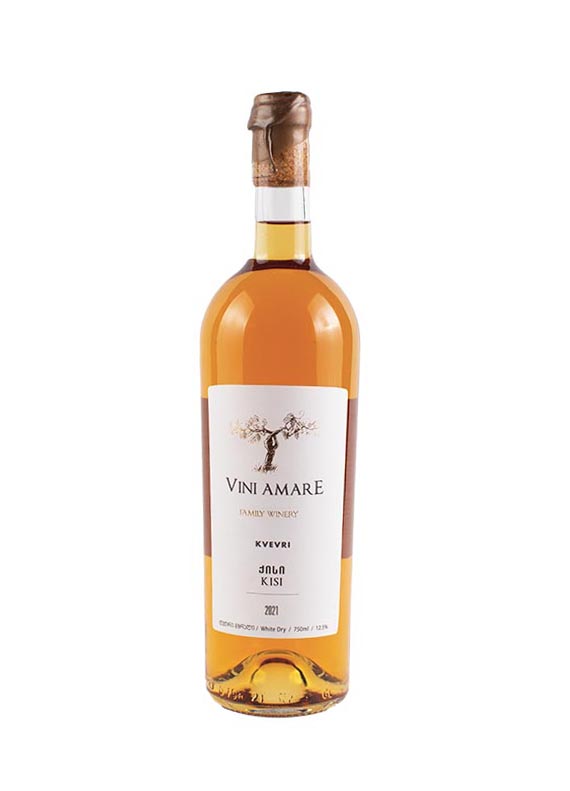
Saba Kitiashvili: This wine displays an intense amber hue, flavours of dried figs and sweet persimmons are detectable. Notably, its palate boasts a pronounced tannic structure, indicating excellent aging potential. A fitting pairing would be with poultry dishes featuring the Bazhe Sauce (Georgian walnut based sauce) – as you know, high-tannin wines complement these type of dishes splendidly.
Nikoloz Khomasuridze: The wine’s color is perfect. Its aromatic structure unfolds with notes of stone fruits like peach and apricot, seamlessly merging into an exotic fruit medley. This wine has a fuller body compared to Kakhuri Mtsvane.
Winery Begaso
Saba Kitiashvili: Begaso is as an organic winery, Siblings Nunu and Giorgi have been carrying forth their grandfather’s legacy since 2015. Their children, Levan and Erekle, soon joined the endeavor. When I first became familiar with this winery, what particularly caught my attention was that their vineyards are situated in the PDO zone of Kindzmarauli. This fact alone set my expectations sky-high for their Saperavi.
This vineyard’s soil contains black stone (granite) debris and has good drainage as well. Hence the grapes yielded are structurally robust and high in sugar content, resulting in wines distinguished by mineral and wild berry tones. For this particular occasion, we have chosen Begaso’s Rkatsiteli and Saperavi, considering that these two varieties dominate most of their vineyards. Nevertheless, they have cultivated ten additional varieties, including Kisi, Khikhvi, and Rkatsiteli Rosé among them. Both Rkatsiteli and Saperavi are crafted in qvevri. As you know, when a winemaker chooses to go organic, the qvevri proves to be invaluable, ensuring a failproof and seamless process.
Tazo Tamazashvili: The winery’s profound affection for nature resonates through their commitment to biological vineyard care, a sentiment vividly captured on the labels of both Sky Watcher and Moon Harvest wines. Natural and biodynamic winemaking is a centuries-old tradition in Georgia: everyone who crafted wine in qvevri, in Georgia, aligned with the ethos, as winemakers adhered to the lunar calendar and nurtured their vineyards using natural methods. This significance is underlined by the conical shape of the qvevri, symbolically associated with both humans and the cosmos.
Nikoloz Khomasuridze: Erekle runs the family winery, alongside his brother, Levan. He is a winemaker obsessed with the romantic essence of wine, which I consider to be paramount in our industry. Begaso stands as a stellar exemplar of traditional winemaking at its finest. The wines seem to be well thought out and crafted.
While we boast a rich heritage and legacy in winemaking spanning centuries, we have just started advancing towards natural winemaking practices. Regions like Imereti, Samegrelo, Guria, Abkhazia, and Ajara in western Georgia have great potential for classic wine production. However, to carve our place within the global winemaking family, I believe that emphasizing our traditional, organic, and biodynamic practices should be our distinctive niche.
Rkatsiteli | Qvevri, 2021
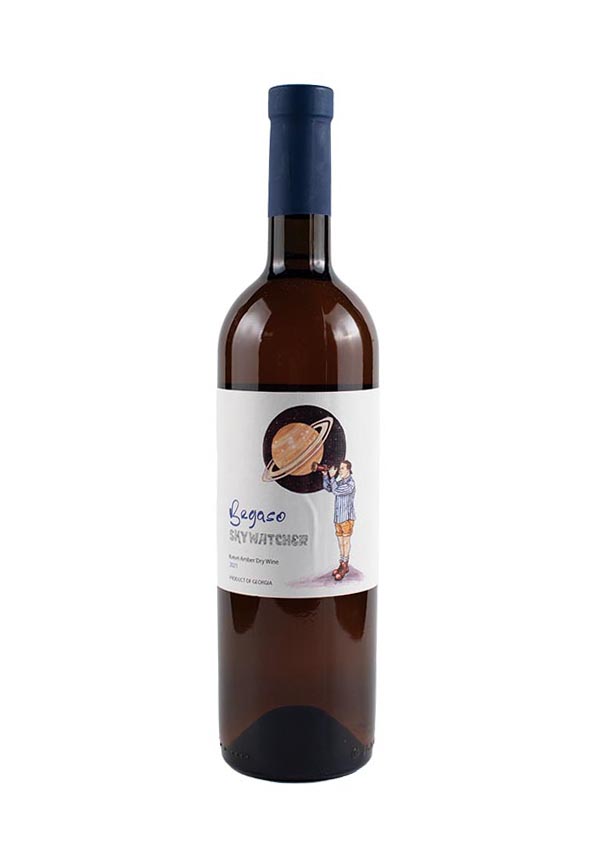
Saba Kitiashvili: Rkatsiteli is an unfiltered wine with a deep amber hue, presenting notes of ripe dried fig, pear, and light hints of melon. Additionally, nuances of caramelization, nuts, and brioche, a result of the lees aging process, emerge prominently. The palate showcases perfection, with strong tannins. Gastronomically it is a good wine. It is recommended to aerate the wine in a decanter for 30-40 minutes prior to serving.
Saperavi | Qvevri, 2021
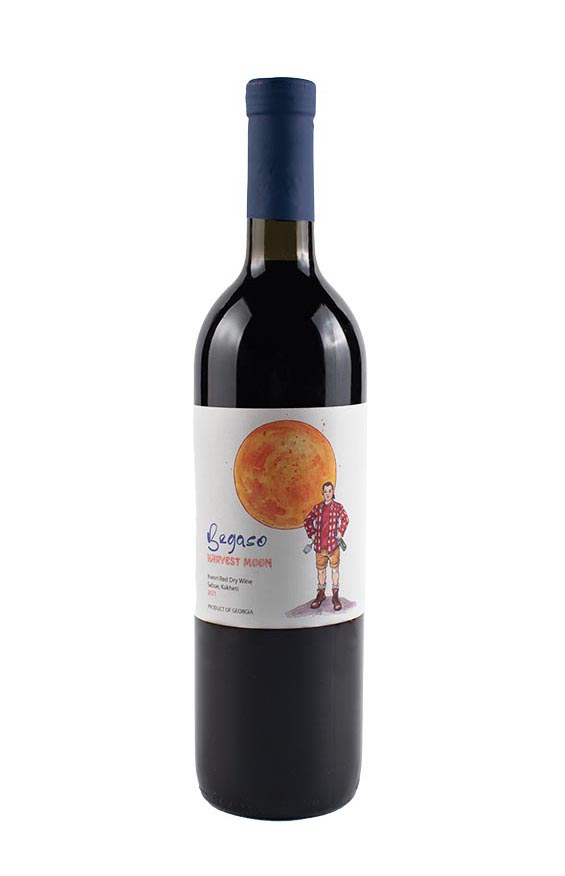
Tazo Tamazashvili: The wine embodies a full-bodied profile and the essence of the Kindzmarauli’s PDO zone is well expressed. It combines varietal and terroir-specific aromas. Initially, the focus lies on the prominence of berry fruits, gradually revealing more depth with time. It also features subtle earthy notes alongside a hint of minerals. Despite being of youthful vintage, this style of wine requires aeration in a decanter.
Winery Orkoli
Nikoloz Khomasuridze: Orkoli derives its name from the Megrelian language, (Kartvelian language spoken in Western Georgia primarily by the Megrelians) signifying wine jug. Nestled within the stunning landscapes of the Chkhorotsku district, this winery is located in Samegrelo, specifically in the village of Mukhuri. Beka Gakharia, the winemaker, and Giorgi Gegelia, head of the sales department, have been dedicated to winemaking since 2017, united by their goal to produce high quality wines.
Tazo Tamazashvili: Orkoli‘s wines – both Krakhuna and Otskhanuri Sapere are crafted utilising the qvevri method characteristic of Western Georgia. Both varieties are from Imereti, namely from the village of Meore Sviri, which is one of the best terroirs for Imeretian grape varieties.
Krakhuna | Qvevri, 2021
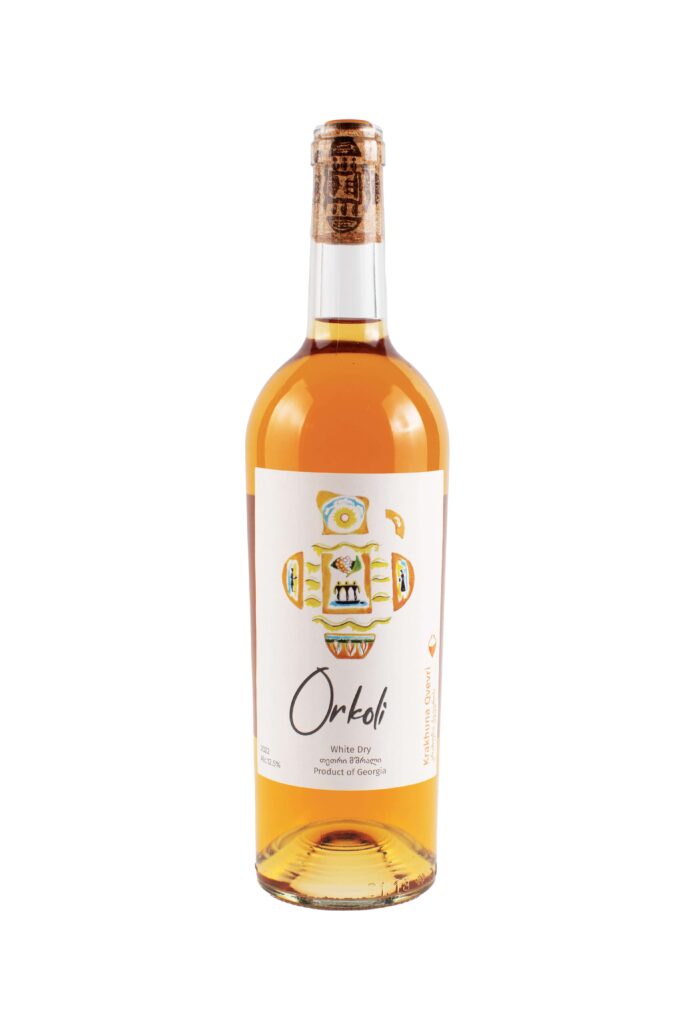
Saba Kitiashvili: It’s worth noting that Krakhuna is primarily used in blends rather than being produced as a standalone variety. The Orkoli’s Krakhuna exhibits prominent aromas of quince and forest apple. Its palate presents medium softness with light tannins, while the slightly elevated acidity contributes to a well-balanced finish. For me, wines like these, with their flavourful and aromatic intensity, sit between Kakhetian qvevri wines and traditional white varieties. When you want neither of the two, it is a delightful wine that sits in the middle with subtle tannins and a delicate structure. This profile pairs wonderfully with walnut-based salads.
Otskhanuri Sapere | Qvevri, 2022
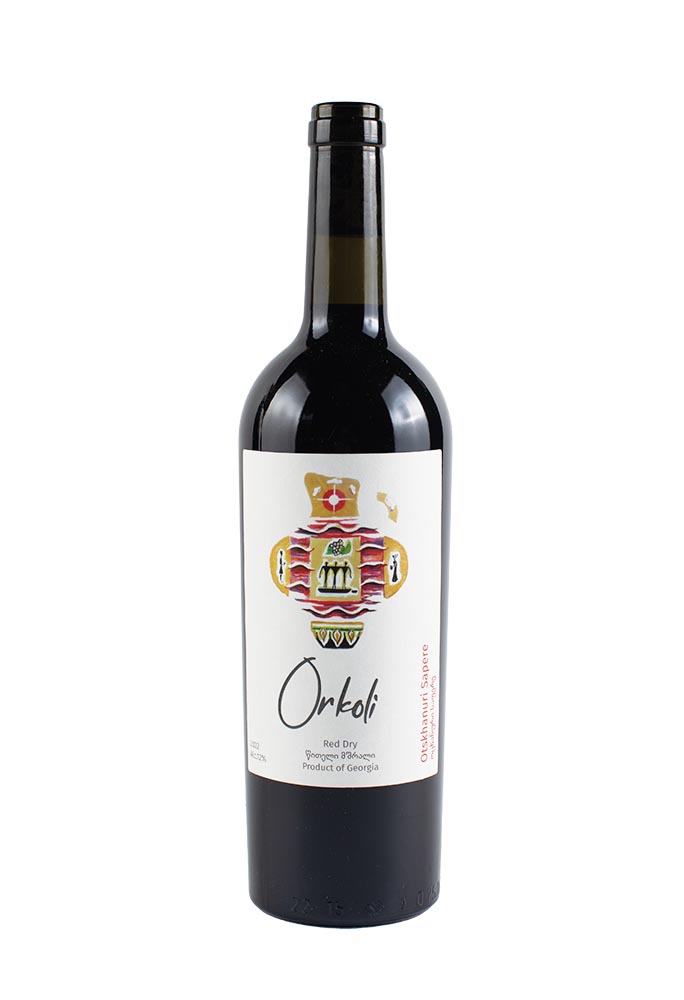
Tazo Tamazashvili: The Otskhanuri Sapere boasts a deep ruby hue, appearing almost opaque, displaying its inherent varietal color potential. However, the wine maintains a moderate alcohol content and a medium-bodied profile, which can vary depending on the harvest year.
Its aromatic profile features distinct notes of leather, black currant, and roasted coffee, transcending into sweet chocolate aromas upon aeration. Hence, it might lead one to perceive it as a blend rather than a single-variety production. On the palate, it offers a harmonious and well-rounded experience, devoid of any harshness, culminating in an exceptionally velvety finish.
The wines from all three wineries maintain their varietal and regional styles. They are ideally suited for gastronomic wine bars and restaurants that prioritize pairing wine with food. These wines are poised not only for success in local markets but also abroad.
YOUNG WINE-MAKERS
თაზო თამაზაშვილი | საქართველოს საუკეთესო სომელიე, 2018 |
რუბრიკაში წარმოგიდგენთ იმ ახალგაზრდა მეღვინეებს, რომლებსაც აქვთ მცირე წარმოება, ორიენტირებულები არიან ხარისხზე, ექსპერიმენტებზე, საინტერესო სამომავლო ხედვები და გეგმები გააჩნიათ, არ აწარმოებენ ყველა სტილს (არადა, შეუძლიათ), ყველა სვლა კარგად აქვთ გათვლილი, აქვთ სურვილი, შექმნან უნიკალური პროდუქტი და გააცნონ მომხმარებელს. ნებისმიერ ქვეყანაში მოგზაურობისას ხომ სწორედ ასეთი მცირე მწარმოებლების მეშვეობით გვექმნება წარმოდგენა ქვეყნისა თუ რეგიონის ღვინოების შესახებ.
მეღვინეობა „ვინი ამარე“
თაზო თამაზაშვილი: „ვინი ამარეს“ ღვინოების მიღმა ახალგაზრდა მეღვინე – გრიგოლ ნეფარიძე დგას, რომლისთვისაც მეღვინეობა საოჯახო ტრადიციაა. გრიგოლმა, აგრარულ უნივერსიტეტში მევენახეობა-მეღვინეობის ფაკულტეტის დასრულების შემდეგ გადაწყვიტა თავად ეწარმოებინა ღვინო და რამდენიმე წელია, სომელიეებსაც გაგვაცნო და ბაზარზეც გამოიტანა. „ვინი ამარეს“ მარნები ჭიათურაში (სოფელი შუქრუთი) და თბილისში აქვს. გრიგოლი რამდენიმე სახეობის ღვინოს კახური ჯიშებისგან აწარმოებს, 5000 ბოთლამდე წელიწადში.
ნიკოლოზ ხომასურიძე: ჩვენ ღვინის მაღაზია „ენოლოგში“ „ვინი ამარეს“ ღვინოების დეგუსტაციიდანვე დამამახსოვრდა ეს ახალგაზრდა მევენახე-მეღვინე, რადგან მეც მისი კოლეგა ვარ. ქართული მეღვინეობის მომავალს სწორედ ასეთ მცირე მარნებში ვხედავ, მათ ექსპერიმენტებსა და ბევრ საინტერესო ცდაში – პატარა მეღვინეობები სწორედ ამ გზას მიუყვებიან, რაც ძალიან დასაფასებელია.
ღვინის დაყენება გრიგოლმა ჭიათურაში დაიწყო – თავიდან კლასიკური მეთოდით, შემდეგ ქვევრის ტრადიციულ ტექნოლოგიაზეც გადავიდა. აწარმოებს რამდენიმე პოზიციას, რომელთაგან ამჯერად გამოვარჩიეთ კახური მწვანე და ქისი.
კახური მწვანე (სოფელი კაკაბეთი), 2021

ნიკოლოზ ხომასურიძე: კახური მწვანე მიმზიდველი შეფერილობისაა, ოქროსფერი, სხივგამტარი, კრიალა. არომატები – ინტენსიური, მდგრადი, გამყოლი: ჯიშისთვის დამახასიათებელი მინდვრის ყვავილების, ახლადმოთიბული ბალახის. მსუბუქად იგრძნობა კახური მწვანესთვის დამახასიათებელი მცენარეული ტონები, რომლებიც ძალიან სასიამოვნოდ გადადის კურკოვანი ხილის არომატებში. გემოზე საშუალოსხეულიანია, მსუბუქი ტანინებით. გასტრონომიული ღვინოა, რომელიც მოუხდება კახურ სამზარეულოს სანელებლებით ნაკლებად შეზავებულ კერძებს.
საბა ქიტიაშვილი: ამ ღვინოში კახური მწვანესთვის დამახასიათებელი ჩაის, მცირედ ყვავილოვანი კომბოსტოსა და ბულგარული წიწაკის მსუბუქი არომატები მართლაც ძალიან კარგად გადადის თეთრი ბლის არომატში. იგრძნობა კარამელიზაციის სასიამოვნო ტონებიც. გამოირჩევა კარგად დაბალანსებული ხავერდოვანი ტანინებით, მიუხედავად იმისა, რომ 2021 წლის მოსავალია.
ქისი (ახმეტის რაიონი), 2021

საბა ქიტიაშვილი: ღვინო ინტენსიური ქარვისფერი შეფერილობისაა. იგრძნობა ლეღვის ჩირისა და ჩამტკბარი ხურმის არომატები. გემოში გამოკვეთილია ტანინიანი სტრუქტურა, რაც ნიშნავს, რომ ღვინოს დავარგებისთვის კარგი პოტენციალი აქვს. შესახამებლად კარგია ფრინველის ხორცისგან მომზადებულ კერძებთან ბაჟეს სოუსში (მოგეხსენებათ, ასეთ კერძებს ძალიან უხდება მაღალტანინი ღვინოები).
ნიკოლოზ ხომასურიძე: ღვინო ფერზე იდეალურია. არომატების სტრუქტურა: კურკოვანი ხილიდან ატამი, გარგარი გადადის ცოტა ეგზოტიკურ ხილშიც. კახურ მწვანესთან შედარებით უფრო მაღალსხეულიანი ღვინოა.
მეღვინეობა „ბეგასო“
საბა ქიტიაშვილი: „ბეგასო“ ბიომეღვინეობაა. პაპისეული საქმიანობა და-ძმამ – ნუნუმ და გიორგიმ 2015 წლიდან გააგრძელეს. საქმიანობაში მალევე ჩაერთნენ გიორგის შვილები – ლევანი და ერეკლე. როდესაც ამ მეღვინეობას გავეცანი, ჩემი ყურადღება მაშინვე მიიქცია იმან, რომ ვენახები ქინძმარაულის ადგილწარმოშობის ზონაში აქვთ, ამიტომ ყველაზე დიდი მოლოდინი საფერავთან დაკავშირებით მქონდა. ამ ვენახის ნიადაგებში ნაშალი შავი ქვაა (გრანიტი), თანაც კარგად დრენაჟირებადია; ყურძენიც სტრუქტურული და მაღალ შაქრიანი მოდის, შესაბამისად, ღვინოები როგორც მინერალური, ისე ველური კენკრის ტონებით ხასიათდება.
ამჯერად, „ბეგასოს“ რქაწითელი და საფერავი შევარჩიეთ, რადგან მათი ვენახების დიდი ნაწილი სწორედ ამ ორ ჯიშს უკავია; თუმცა კიდევ ათამდე ჯიში აქვთ გაშენებული, მათ შორის – ქისი, ხიხვი, ვარდისფერი რქაწითელი. რქაწითელიც და საფერავიც დამზადებულია ქვევრში. მოგეხსენებათ, როდესაც მეღვინე ბიომიმართულებას ირჩევს, ქვევრი საუკეთესო დამხმარეა, რათა პროცესი სწორად წარიმართოს.
თაზო თამაზაშვილი: ამ მეღვინეობას ბუნებისადმი სიყვარული, რაც ვენახების ბიოლოგიურად სუფთა მოვლაშია გამოხატული, Sky Watcher-ის და Moon Harvest-ის ეტიკეტებზეც კარგად აქვს გადმოცემული. ნატურალური და ბიოდინამიური მეღვინეობა საქართველოში საუკუნეების ტრადიციაა. ჩვენში ყველა, ვინც ქვევრში აყენებდა ღვინოს, თავისთავად ამ მიმართულების მიმდევარი იყო, რადგან ითვალისწინებდა მთვარის კალენდარს და ვენახსაც ბუნებრივი საშუალებებით უვლიდა. ამ ფაქტს ხაზს უსვამს თავად ქვევრის კონუსისებრი ფორმა, რომელიც ადამიანთან და კოსმოსთან არის დაკავშირებული.
ნიკოლოზ ხომასურიძე: ერეკლე საოჯახო მეღვინეობას ძმასთან, ლევანთან ერთად უძღვება. ეს მეღვინე ღვინის რომანტიზმით არის შეპყრობილი, რაც, მე თუ მკითხავთ, ჩვენს სფეროში ეს ყველაზე მნიშვნელოვანია. „ბეგასო“ ტრადიციული მეღვინეობის ერთ-ერთი საუკეთესო მაგალითია. ღვინოებს ეტყობა, რომ თითოეული კარგად ნაფიქრი და ნამუშევარია.
მიუხედავად იმისა, რომ ღვინის დაყენების მრავალსაუკუნოვანი კულტურა და ტრადიცია გაგვაჩნია, ნატურალური მეღვინეობის მიმართულებით მაინც ახლა ვდგამთ მნიშვნელოვან ნაბიჯებს. კლასიკური ღვინის კუთხით დასავლეთ საქართველოს რეგიონებს – იმერეთს, სამეგრელოს, გურიას, აფხაზეთს, აჭარას – უდიდესი პოტენციალი აქვს, მაგრამ ვფიქრობ, მსოფლიო მეღვინეობის დიდ ოჯახში თავის დასამკვიდრებლად ტრადიციული, ბიო და ბიოდინამიური მიმართულება უნდა გახდეს ჩვენი ნიშა.
რქაწითელი | ქვევრი, 2021

საბა ქიტიაშვილი: რქაწითელი მუქი ქარვისფერი შეფერილობის, გაუფილტრავი ღვინოა. ჩამწიფებული, დაჩირებული ლეღვის, მსხლის და მსუბუქად ნესვის არომატებით; ასევე, კარგად შემოდის კარამელიზაციის, თხილეულის და ბრიოშის ტონები, რომელიც ლექზე დავარგების პროცესში ყალიბდება. გემოზე – სრულყოფილი, ძლიერტანინიანი. გასტრონომიულად კარგი ღვინოა. ვიდრე მიირთმევთ, სასურველია 30-40 წუთიანი აერაცია დეკანტერში.
საფერავი | ქვევრი, 2021

თაზო თამაზაშვილი: ღვინო მაღალსხეულიანია და მასში კარგადაა გამოხატული ქინძმარაულის ადგილწარმოშობის ზონა. გამოირჩევა როგორც ჯიშური, ისე ტერუარული არომატებით. გამოკვეთილია პირველ რიგში, კენკროვანი ხილი, რომელიც დროთა განმავლობაში უფრო მეტად იხსნება. ასევე გამოხატულია როგორც მიწისეული, ისე ოდნავ მინერალური ტონებიც. ეს იმ სტილის ღვინოა, რომელიც შეიძლება მოსავლის წლით ახალგაზრდა იყოს, მაგრამ საჭიროებდეს აერაციას დეკანტერში.
მეღვინეობა „ორკოლი“
ნიკოლოზ ხომასურიძე: „ორკოლი“ მეგრულად ღვინის დოქს ნიშნავს. მეღვინეობა სამეგრელოში, ჩხუროწყუს რაიონის ულამაზეს ბუნებაში ჩაფლულ სოფელ მუხურში მდებარეობს. ბექა გახარია (მეღვინე) და გიორგი გეგელია (გაყიდვების მიმართულების ხელმძღვანელი) მეღვინეობაში 2017 წლიდან ჩაერთნენ და მიზნად მაღალხარისხიანი ღვინოების წარმოება დაისახეს.
თაზო თამაზაშვილი: „ორკოლის“ ღვინოები – როგორც კრახუნა, ისე ოცხანური საფერე დასავლეთ საქართველოსთვის დამახასიათებელი – ჭურის მეთოდით არის დამზადებული. ორივე ჯიში იმერეთიდან, კერძოდ, სოფელ მეორე სვირიდანაა, რომელიც ერთ-ერთი საუკეთესო ტერუარია იმერული ჯიშებისთვის.
კრახუნა ქვევრი, 2021

საბა ქიტიაშვილი: უნდა აღვნიშნოთ, რომ კრახუნას ბლენდებში უფრო ვხვდებით, ვიდრე ცალკე დაყენებულს.„ორკოლის“ კრახუნაში იკვეთება კომშისა და ტყის ვაშლის არომატები. გემოში საშუალო, რბილი და მსუბუქი ტანინები. საშუალოზე ოდნავ მაღალი მჟავიანობა, რომელიც საბოლოოდ, კარგ ბალანსს ქმნის. ასეთი ღვინოები – თავისი გემოვნური და არომატული ინტენსივობით – ჩემთვის კახური ქვევრის ღვინოებსა და კლასიკურ თეთრებს შორის მდგომია: როცა არც ერთი გინდა და არც მეორე, შუაში ძალიან კარგი, მცირედტანინიანი, მსუბუქი სტრუქტურის ღვინოა, ნიგვზიან სალათებთან კარგად მისართმევი.
ოცხანური საფერე, ჭური, 2022

თაზო თამაზაშვილი: ოცხანური საფერე მუქი ლალისფერია, გაუმჭვირვალეც კი, რაც მის ჯიშური შეფერილობის პოტენციალს აღწერს. ამავე დროს, ღვინოს არ აქვს მაღალი ალკოჰოლი, საშუალოსხეულიანია, რაც მოსავლის წლიდან გამომდინარეობს. არომატებში კარგადაა წარმოჩენილი ტყავის, შავი მოცხარის და მოხალული ყავის ტონები, რომლებიც აერაციასთან ერთად გარდაიქმნება ტკბილი შოკოლადის არომატებში. ამის გამო, შეიძლება ვერ იფიქროთ რომ ეს ერთი ჯიშისგან წარმოებული ღვინოა და ასამბლიაჟი გეგონოთ. გემოზე დაბალანსებული და დამრგვალებულია. არ აქვს უხეში დაბოლოება, პირიქით – მაქსიმალურად ხავერდოვანია.
სამივე მარნის ღვინოებს შენარჩუნებული აქვს ჯიშური და რეგიონული სტილი. მათი ადგილი ისეთ გასტრონომიულ ღვინის ბარებსა და რესტორნებშია, სადაც ღვინისა და კერძების შეხამება ხდება. ეს ღვინოები აუცილებლად მიაღწევენ წარმატებას როგორც ადგილობრივ ბაზარზე, ისე ქვეყნის ფარგლებს გარეთ.
—————————————————–
მადლობა რუბრიკის მასპინძლობისთვის ირაკლი ნაკაიძეს და ცამეტი • Tsameti Restaurant-ს.

